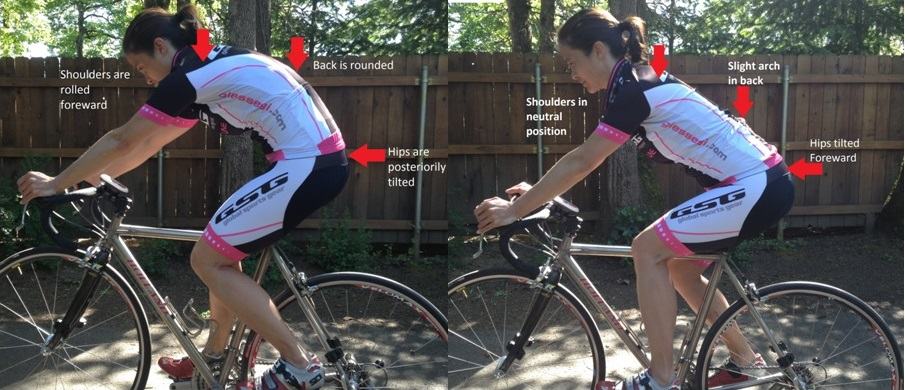Are you sitting with the right posture on your bike? While it doesn’t make much of a difference if you are riding for five minutes, if you are taking on a long distance journey your posture is very important. For example, if you are going on a charity bike ride from London to Paris or one of the other long distance charity challenges you will find that poor posture makes a huge difference and can cause you to suffer from sore and aching muscles at the end of your ride.
Even having your posture slightly off means that you will be over or under extending your muscles in some way. This adds up on a long cycling trip or charity bike ride and will cause you a lot of pain and soreness.
So how do you find the right fit for your bike? If your bike fits well and is set up correctly it will offer you good handling in all circumstances. You should be able to reach all parts of the handlebars without putting any stress on your hands or elbows. Your arms should be not quite straight and your back should be at an angle of approximately 45 degrees.
The Handlebar Position
One of the common issues is having the handlebars too long and low, especially if you are a female with a smaller torso. In this situation it might help to use a smaller handlebar stem or to flip the handlebar stem. Your arms shouldn’t be extended unnaturally far to reach the handlebars and they should be gripping the handlebars tightly, they should be grasping them gently.
Ideally, the angle between the upper arm and the torso should be around 90 degrees. It is best to have a slight bend in the elbows, which will make you more comfortable during your long distance cycling ride. Try to experiment with different hand position on the handlebars so that you decide which feels more comfortable. Also, keep in mind that at some points you will be standing, such as when you are climbing up a hill.
Seat Height – Is it Correct?
Another very important thing to keep in mind is your seat height. Getting this right is a very important aspect of your bike position. Ideally, when your leg is at the bottom of its stroke on the pedals your knee should have a slight bend to it. Keep adjusting your seat until it is at the right height and don’t forget to factor in the clothes you are wearing while you are riding and the thickness of the soles of your shoes.
The Ideal Pedal and Cleat Position
It is also important to pay attention to your pedal and cleat position. If your feet are poorly positioned this can lead to issues with the pedals cutting off your circulation. It can also cause leg strain and knee issues. The cleats will need to match the angles of your feet. If you are splay footed or pigeon toed you could hurt your knees If your cleats don’t reflect this. You can check this by sitting on a table and letting your legs dangle naturally. Note whether they are straight or if they splay or turn in.
The Right Saddle
You’ll also need to choose the right saddle for you. All saddles are not made equal – some are a lot more comfortable than others. Also, saddles are wider or more narrow and some designs might be more comfortable to you depending on the shape of your bottom.
A poor fitting and uncomfortable saddle can rub against you and cause uncomfortable “saddle sores”. It’s definitely worth taking the time to try a few different saddles before choosing one for your bike, especially if you are planning on going on long distance charity challenge rides.
These are just a few important tips that you should keep in mind when it comes to finding the ideal posture on your bike. Although this doesn’t make much of a difference for casual cyclists, it is incredibly important for those long distance cyclists who are going for a long distance ride. Over many miles of cycling the wrong posture will leave you stiff, aching and sore – while the correct riding position will minimize your risk of injuries, aches and pains.

